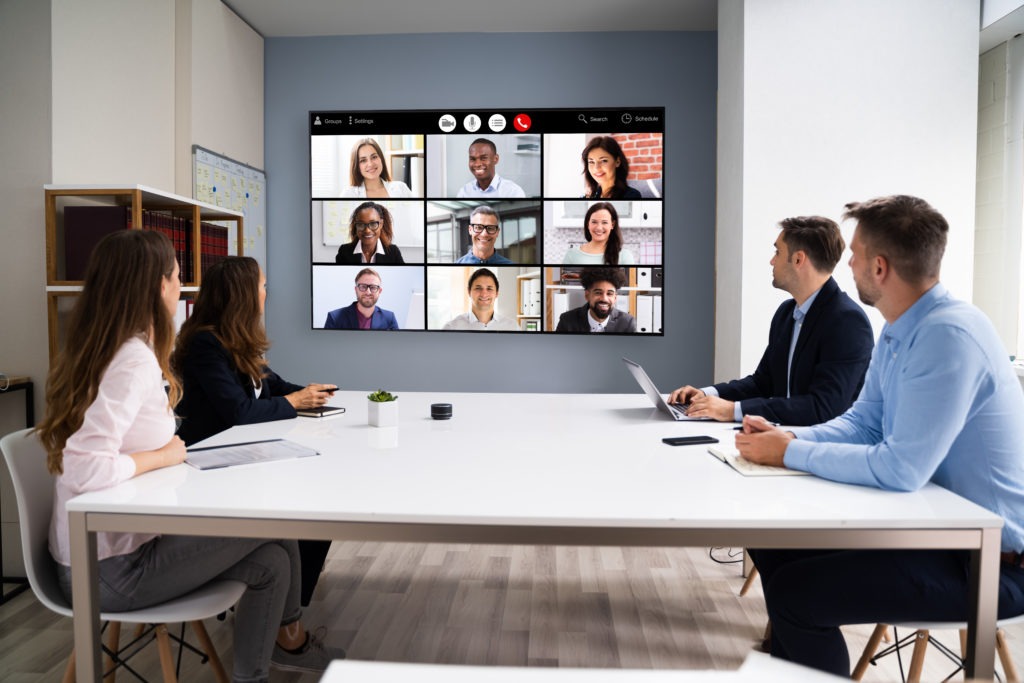In the dynamic future of work, the choices made by the workforce are shaping the future. Currently, 12.7% of full-time employees have embraced remote work, while 28.2% are adopting a hybrid model, blending home and in-office work.* This surge in remote work showcases the normalization of flexible work environments, with the hybrid model offering a versatile alternative that maintains a physical presence in the workplace.
Looking forward to 2024, the trajectory of remote work appears promising. A separate survey of CHROs from Fortune 500 companies found that eight in 10 had no plans to decrease remote work flexibility in the next 12 months.* This forecast reflects a steady transition towards remote work arrangements, mirroring the evolving dynamics of the modern workplace.

As remote work gains traction, organizations are witnessing enhanced productivity from their remote teams. However, chief executives hold diverse opinions on the sustainability and advantages of remote work, highlighting the ongoing exploration of the future of work.
Aviva, a U.K. insurer, exemplifies the diverse perspectives on the balance between remote and in-office work. Their research reveals significant variations in employee opinions, leading Aviva to pioneer a customized strategy. This approach empowers managers to determine the optimal time team members should spend in the office, avoiding a one-size-fits-all return-to-work plan.
Generative AI emerges as a powerful ally for remote and hybrid work, facilitating information sharing, improving communication, and supporting knowledge management and skill development. As a transformative force, AI ensures security and privacy while revolutionizing the way we work.
However, organizations must navigate associated risks and address liabilities to fully embrace AI’s potential for remote and hybrid workforces. This approach fosters a more flexible, efficient, and fulfilling work experience.
While there are no one-size-fits-all answers for successful team engagement for future-ready growth, Next Step clients are succeeding with through:
- Openness: Trying new approaches and work environments—whether in the office, remote, or hybrid—and involving team members in defining the future workplace.
- Authenticity: Building trust and engagement through honesty, aligning employees’ personal values with organizational objectives.
- Empowerment: Empowering middle managers and team members to learn, experiment, and co-create new approaches and solutions with customers, partners, and peers in other organizations.
- Curiosity: Exploring new trends and continuously adapting policies, processes, and organizations to be future-ready.
While the specific needs may vary for each company, all future-ready leaders are taking action to explore, learn, and empower their organizations to succeed in the ever-evolving landscape of work.
As we navigate the future of work, the choices we make today will shape the landscape for tomorrow. The interplay between remote, hybrid, and traditional work models requires consideration and strategic leadership. Embracing openness, authenticity, empowerment, and curiosity positions organizations on the path to future-ready success.
For more insights into steering your company into the future of work, stay connected with Next Step. Explore our blog for in-depth articles and practical tips on transforming your workplace. Follow us on LinkedIn to stay updated on the latest trends and strategies in business transformation and growth
Alternatively, for a direct line to visionary leadership, follow CEO Jennifer Vessels for firsthand experiences, bold insights, and actionable takeaways. Your journey to success begins with the Next Step.
* Remote Work Statistics & Trends In (2023) – Forbes Advisor
